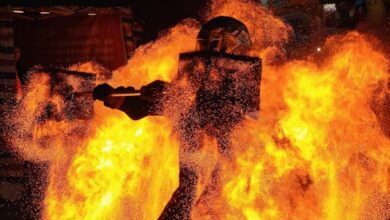Tackling the Unseen: The Challenge of Strongly Correlated Systems

Imagine you’re trying to fix a complex, high-performance engine, but the manufacturer never gave you a manual, and half the parts are invisible. That’s a bit like the challenge physicists face when dealing with “strongly correlated systems” – a vast and fascinating frontier in condensed matter physics. These are materials where the electrons don’t just buzz along independently; they interact so intensely that their collective behavior creates entirely new phenomena, often defying our standard theoretical toolkits. Think high-temperature superconductivity or exotic quantum phases – these are the mysteries keeping brilliant minds awake at night.
To grapple with these enigmatic systems, researchers have developed a diverse array of theoretical approaches. Each offers a unique lens, a different set of approximations, or even a fundamentally distinct conceptual framework. Today, we’re diving into three such powerhouse techniques: Bosonization, Eikonal, and the more recently prominent (and debated) Holographic methods. We’ll explore their individual strengths, their typical applications, and why a direct comparison between them is becoming increasingly crucial in our quest for a deeper understanding.
Tackling the Unseen: The Challenge of Strongly Correlated Systems
Why are strongly correlated systems such a headache? In a nutshell, their complexity explodes. When electrons interact weakly, we can often use perturbation theory – essentially, treating the interactions as small corrections to a simpler, non-interacting picture. But strong correlations mean these interactions are *dominant*. The electrons are constantly pushing, pulling, and dancing with each other, creating a tangled web of quantum entanglement that no simple approximation can untangle.
This is where the “Ubiquitous NFL Problem” often emerges – not about American football, but about the “No-Free-Lunch” theorem, or a specific context referring to highly non-Fermi liquid behaviors. Such systems deviate drastically from the conventional Fermi liquid theory, which successfully describes many metals. Standard models break down, and we’re left searching for entirely new frameworks to describe their fundamental properties. This is precisely why a diverse set of theoretical tools becomes indispensable.
A Trio of Tools: Eikonal, Bosonization, and Holography
Let’s take a closer look at these distinct approaches and what they bring to the table.
Eikonal: A Glimpse into High-Energy Simplification
The Eikonal approximation often finds its home in high-energy scattering problems, where particles collide at immense speeds. Think of it as simplifying a complex trajectory into a straight-line path, with interactions treated as minor deviations. It’s a method that often allows for a more tractable calculation of scattering amplitudes by assuming that the incident particle’s momentum is much larger than the momentum transfer during the collision.
While perhaps less directly applied to the everyday mysteries of condensed matter than its counterparts, Eikonal techniques offer valuable insights into how particles interact in extreme conditions. It provides a strategic simplification when certain energy scales dominate, giving physicists a way to cut through the noise and get to a computable answer in specific scenarios.
Bosonization: Transforming the Intractable
Bosonization is a truly elegant and somewhat magical technique, primarily used for one-dimensional (1D) fermionic systems. In 1D, the behavior of interacting fermions becomes incredibly complex. What Bosonization does is transform these interacting fermions into non-interacting bosons. Yes, you read that right – it converts a problem of complex interacting particles into a simpler problem of non-interacting ones, just of a different statistical type (bosons instead of fermions).
This transformation reveals that the collective excitations of these 1D fermionic systems often behave like bosonic waves. It’s a powerful “legacy” method, as our background info notes, because it allows us to exactly solve certain models that would otherwise be intractable. It’s been instrumental in understanding phenomena like Luttinger liquids, which are the 1D analogues of Fermi liquids and crucial for systems like quantum wires.
Holography’s Allure (and its Puzzles)
Then there’s Holography. This technique burst onto the scene with the advent of the AdS/CFT correspondence (Anti-de Sitter/Conformal Field Theory), a profound duality originating from string theory. The core idea is that a strongly interacting quantum field theory in a certain number of dimensions can be described by a weakly interacting gravitational theory in one higher dimension. It’s like having a hologram: a 3D image encoded on a 2D surface.
For condensed matter physicists, this offered an enticing prospect: a potential way to tackle strongly correlated systems by mapping them to a simpler, classical gravity problem. For a while, there was a palpable buzz, a “flurry of holographic publications” as the background information points out, with researchers eagerly applying it to everything from superconductivity to quantum criticality.
However, the enthusiasm has somewhat tempered. As the original paper wisely observes, this “optimistic reassurance often appears to be in a rather stark contrast with the typical summary that sounds more like ‘as no unambiguous agreement with experiment was found, the problem is left to future work’.” Much of the initial thrust, often dubbed “holo-hacking” or “bottom-up holography,” involved selecting a “favorite gravity-like bulk theory” based on convenience rather than fundamental justification. The “dictionary” used to translate between the gravitational bulk and the condensed matter boundary was often “copy-pasted from the original string-theoretical framework” without rigorous adaptation.
The concern isn’t that holography is useless. It has indeed revitalized topics like hydrodynamics, even if hydrodynamics can (and historically has been) discussed without it. The real issue is the lack of a robust, experimentally verifiable connection for many of its applications in strongly correlated condensed matter. As our source reminds us, “just because everyone else on a highway may be driving above the posted speed limit does not by itself make it legal” – a brilliant analogy for the need for proper justification beyond widespread practice.
The Imperative for Comparison: Why We Need a Shared Arena
This is where the wisdom of comparing holographic propagators with predictions from other techniques, like Bosonization or Eikonal, truly shines. It’s not about declaring a winner or a loser, but about creating a “testing ground.” If holography is to move beyond a heuristic tool and become a foundational method for understanding strongly correlated systems, it needs to prove its mettle against established, experimentally validated techniques.
Such comparisons can serve multiple purposes: they can validate the predictions of alternative methods, highlight the conditions under which holographic models are truly applicable, and perhaps most importantly, provide concrete directions for refining the holographic “dictionary” and its underlying gravitational theories. When different approaches converge on the same predictions, our confidence in those predictions skyrockets. When they diverge, it forces us to critically examine the assumptions and limitations of each method.
This isn’t just an academic exercise; it’s fundamental to scientific progress. It pushes us to move beyond convenient computational tasks or the availability of software, and towards a deeper, more physically compelling justification for our theoretical tools. It forces the field to mature, demanding clarity and consistency in how we model the universe’s most complex materials.
Charting a Path Forward
The journey to fully understand strongly correlated systems is far from over. Techniques like Eikonal, with its precise high-energy approximations, and Bosonization, with its elegant solutions for 1D systems, continue to offer invaluable insights. Holography, despite its current challenges in direct experimental validation, still holds immense promise for providing a novel, non-perturbative perspective on strong coupling phenomena.
The key to unlocking the next generation of breakthroughs lies not in isolating these methods, but in bringing them into a dialogue. By rigorously comparing their predictions, scrutinizing their underlying assumptions, and challenging them against both theory and experiment, we can refine our understanding, build more robust models, and ultimately, piece together the manual for that complex, high-performance engine that is strongly correlated matter. This collective effort ensures that our theoretical exploration remains anchored in the pursuit of genuine physical insight.





